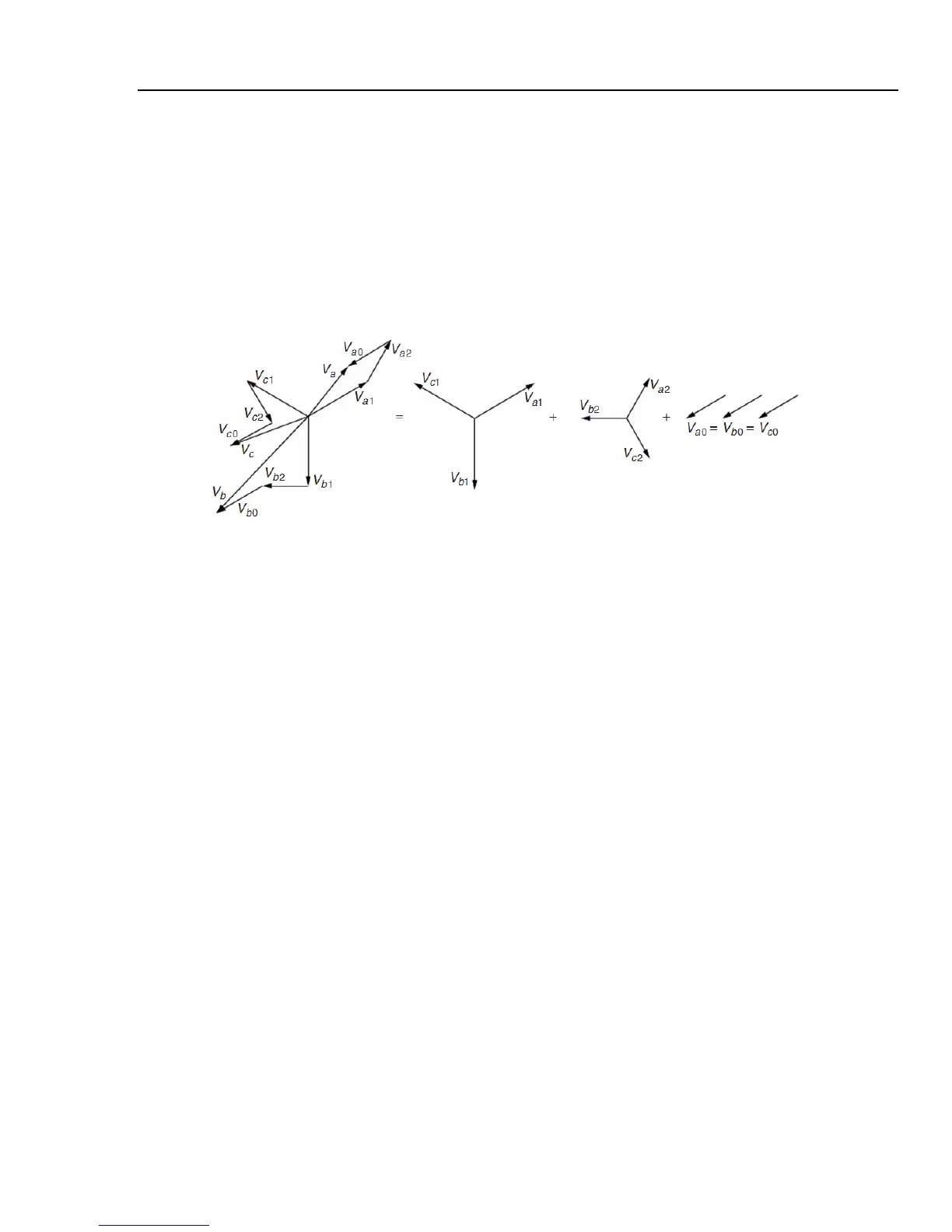Appendices
Measuring Methods A
A-3
Symmetrical components in Three-Phase Systems
In 1918, C. L. Fortescue published a paper called ‘Method of Symmetrical Coordinates
Applied to the Solution of Polyphase Networks’ in the Transactions of the American
Institute of Electrical Engineers. This paper describes a method to resolve an unbalanced
set of 3-phasors into 2 balanced 3-phase systems of different phase sequence and one
zero-phase system in which all phasors are of equal magnitude and angle.
This method can be used for voltage, current and power phasors.
The figure below shows three unbalanced voltage phasors resolved in three sets of
symmetrical components.
Va=Va1+Va2+Va0, Vb= Vb1+ Vb2+ Vb0, Vc= Vc1+ Vc2+ Vc0
Va,Vb,Vc are three phasors that are not in balance andVa1,Vb1, Vc1andVa2,Vb2,Vc2are
two sets of three balanced phasors with an angle of 120° between the components a, b,
and c.
The components of the phasor set Va0, Vb0, Vc0 are identical in amplitude and angle.
Va1, Vb1, Vc1 is the positive sequence.
Va2, Vb2, Vc2 is the negative sequence
Va0, Vb0, Vc0 is the zero sequence.
The names zero, positive, and negative refer to the sequence of rotation of the phasors.
The positive-sequence set of phasors (Va1,Vb1,Vc1) is the same as the voltages produced
by a synchronous generator in the power system that has phase sequence a-b-c. The
negative sequence (Va2,Vb2,Vc2) has phase sequence a-c-b, thus rotating the opposite
direction compared to the positive system. The zero sequence phasors (Va0,Vb0,Vc0)
have zero-phase displacement and are identical.
The method of symmetrical components is used to calculate the power components not
including harmonics and unbalance.
1.800.868.7495info@Fluke-Direct.ca
Fluke-Direct.ca

